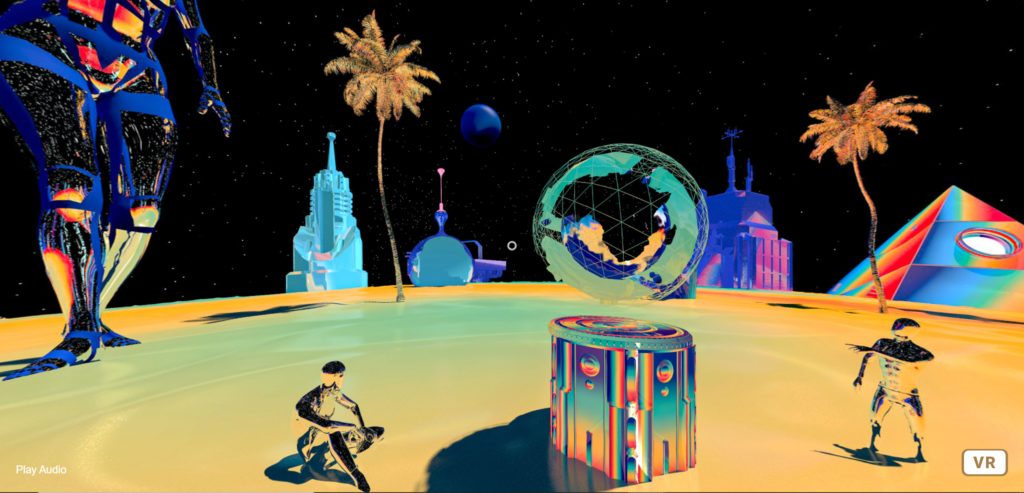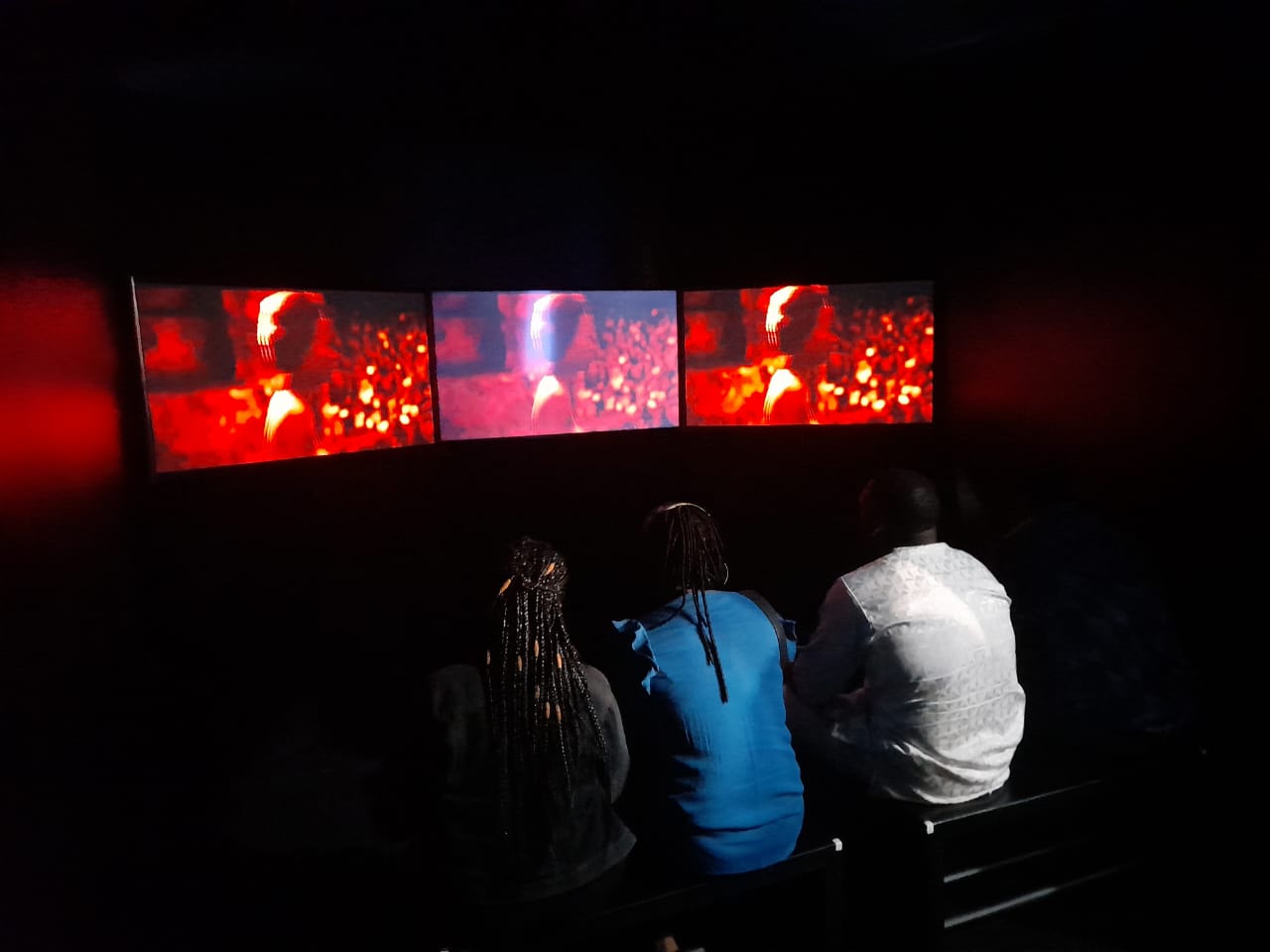“How will Africans protect our culture in unexplored places?”
This was one of the questions David Alabo, a Ghana-based artist with Moroccan heritage, was thinking about when he created “One Africa Three Futures”.
Alabo, an afro-surrealist, used 3D and virtual reality (VR) to help his audience at the recently concluded Art X Lagos to see and interact with futures they are not used to.
Alabo’s newly commissioned work is part of Future Africa, a project sponsored by Africa No Filter, which explores the “current challenges that arise when thinking about the future state of the African continent”.
Unfamiliar and uncertain futures
One of the futures Alabo designed shows a world where everything is in flames and the only ray of light is Africa—inside the skeleton of an animal. Alabo project intends to show his audience some of Africa’s many possible futures.
Under the Future Africa theme, “The restful ones are not yet born”, David Alabo and Adéọlá Ọlágúnjú, an artist working with video, photography, sound and installations, explore questions like, What does thinking about the future mean? Under what parameters do we want to imagine that future?
Speaking about her solo exhibition, a three-channel video titled, “ÌYÁBỌ̀”, Ọlágúnjú’s said that Africa is in a space where it is trying to birth itself, and this will bring chaos. Ọlágúnjú’s speculations about Africa’s future are fluid. Drawing inspiration from her experience as a young child who lived through military dictatorships in Nigeria, Ọlágúnjú believes that rebirth comes with chaos, confusion, and destruction.
Immersive experiences
Alabo, who practises Afrofuturism, focuses on reinterpreting classic African ideas but through new technology or new media. By creating an immersive experience using technology, he explained that it opens art up to more people.

“It’s a way of experimenting with the different ways art can be shown. This is because not everybody responds to one type of art. Some people might not be responsive to painting, but when they see moving art or animation, it draws them. Some people like more traditional art. But it’s up to us artists to find new ways to show art, to connect with more people, bring in people who are marginalised who may not have been interested in art before, to experience art in a new way.”
Instead of VR headsets, Alabo allows his audience to use their phones and laptops to access the VR experience. One reason for that, according to him, is: VR headsets make some people dizzy.
In a different vein, Alabo said the challenge of creating his type of art is that people do not understand his work or accept it as contemporary art.
But he is grateful he is able to bring his audience into his work and also give them control. “People appreciate when they are not just fed something but can also interact with it.”
Speaking about his future plans, Alabo is thinking of using this immersive experience for his physical solo show. “I’d like to bring this immersive experience into a physical space.”















